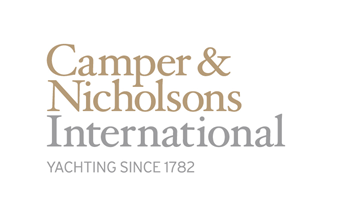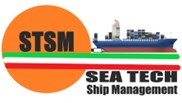-
Vessel/ Site
-
Document No.
-
Conducted on
-
Prepared by
-
Location
-
Personnel
-
Referenced documents/publications
PRE-LAYUP DOCUMENTATION (L2-TECH-PRD-02-005 ROVING FLEET, REV 0)
-
Laid-Up vessels accompanied with L3 Vessel Layup Request (approved by COO)?
- Compliance
- Observation
- Non-Compliance
- Major Non-Conformance
- Not sighted
- Not Applicable
-
Which vessel is not in compliance?
-
Which vessel is not in compliance?
-
Taking/handing over of the cold layup vessels with Business Unit are done with the form L3 Vessel Handover Checklist (Layup)?
- Compliance
- Observation
- Non-Compliance
- Major Non-Conformance
- Not sighted
- Not Applicable
-
Vessels that is under layup (without handing over) and maintained by Roving team.
-
Vessels that is under layup (without handing over) and maintained by Roving team.
CLASS STATUS DURING LAY-UP
-
1. Class Notation & Status of Layup vessels (to obtain sampling).
- Compliance
- Observation
- Non-Compliance
- Major Non-Conformance
- Not sighted
- Not Applicable
-
2. For vessel in Cold layup, are the ISM & ISPS certificates withdrawn?
- Compliance
- Observation
- Non-Compliance
- Major Non-Conformance
- Not sighted
- Not Applicable
INSURANCE ISSUES
-
PROTECTION AND INDEMNITY COVER - Does local port authorities require a letter from local P&I club representatives to confirm that the laid-up vessel is covered for port risks (e.g. oil pollution, wreck removal, and salvage costs)?
- Compliance
- Observation
- Non-Compliance
- Major Non-Conformance
- Not sighted
- Not Applicable
-
HULL AND MACHINERY COVER - Opt for a laid-up return of premium; or with the underwriter’s agreement, cancel the trading policy and substitute this with a ports risk policy
- Compliance
- Observation
- Non-Compliance
- Major Non-Conformance
- Not sighted
- Not Applicable
HV EQUIPMENT
-
BREAKERS, BUSBARS AND SWITCHBOARDS - All high-voltage (HV) breakers were withdrawn for a detailed visual inspection of terminations, spouts and mechanical linkages.
- Compliance
- Observation
- Non-Compliance
- Major Non-Conformance
- Not sighted
- Not Applicable
-
BREAKERS, BUSBARS AND SWITCHBOARDS - All protective relays and master trip relays should be inspected and electrically tested in accordance with the Rules. They should then be removed, sealed and kept in dry storage. The exposed openings in the switchboard should be sealed to prevent ingress of moisture and contamination.
- Compliance
- Observation
- Non-Compliance
- Major Non-Conformance
- Not sighted
- Not Applicable
-
PROPULSION MOTORS, CONVERTERS AND GENERATORS - With the equipment de-energised and isolated, a fully detailed visual inspection was undertaken.
- Compliance
- Observation
- Non-Compliance
- Major Non-Conformance
- Not sighted
- Not Applicable
1. SAFETY CONDITIONS
1.1 Safety conditions to be kept throughout the lay-up period include but not limited to:
-
1. Power supply
- Compliance
- Observation
- Non-Compliance
- Major Non-Conformance
- Not sighted
- Not Applicable
-
2. Manning
- Compliance
- Observation
- Non-Compliance
- Major Non-Conformance
- Not sighted
- Not Applicable
-
3. Fire protection and fire fighting
- Compliance
- Observation
- Non-Compliance
- Major Non-Conformance
- Not sighted
- Not Applicable
-
4. Protection against explosion or flooding
- Compliance
- Observation
- Non-Compliance
- Major Non-Conformance
- Not sighted
- Not Applicable
-
5. Prevention of failure of mooring or anchor
- Compliance
- Observation
- Non-Compliance
- Major Non-Conformance
- Not sighted
- Not Applicable
-
6. Safety equipment
- Compliance
- Observation
- Non-Compliance
- Major Non-Conformance
- Not sighted
- Not Applicable
-
7. Emergency power
- Compliance
- Observation
- Non-Compliance
- Major Non-Conformance
- Not sighted
- Not Applicable
2. MOORING ARRANGEMENTS
Vessel arrangements
-
How are the vessels arranged?
SHIPS MOORED IN GROUPS When ships are to be laid–up in groups, mooring arrangements should be in with the following additional requirements:
-
1. Adjacent ships should be similar size to avoid differential surging motions and they should be ballasted to similar freeboards to permit breast lines to be directly led.
- Compliance
- Observation
- Non-Compliance
- Major Non-Conformance
- Not sighted
- Not Applicable
-
2. The fore and aft direction of each vessel should be parallel to the prevailing string winds.
- Compliance
- Observation
- Non-Compliance
- Major Non-Conformance
- Not sighted
- Not Applicable
-
3. Breast mooring lines should be provided, sufficiently tensioned and of similar stretch characteristics.
- Compliance
- Observation
- Non-Compliance
- Major Non-Conformance
- Not sighted
- Not Applicable
-
4. Sufficiently sized fendering arrangements be provided alongside at areas of possible contact with other ships of shoe structures.
- Compliance
- Observation
- Non-Compliance
- Major Non-Conformance
- Not sighted
- Not Applicable
-
5. If the auxiliary engine on one vessel is used to supply power to other vessels, it is preferably that all other vessels are electrically connected to avoid stray currents.
- Compliance
- Observation
- Non-Compliance
- Major Non-Conformance
- Not sighted
- Not Applicable
SHIPS MOORED IN INDIVIDUALLY When ships are to be laid–up individually, mooring arrangements should be in with the following additional requirements:
-
1. When ships are laid-up to buoys or anchored, they should be moored to prevent swinging in winds or as a result of tidal changes.
- Compliance
- Observation
- Non-Compliance
- Major Non-Conformance
- Not sighted
- Not Applicable
-
2. When ships are anchored, the chain cables must not be capable of twisting or cross contact, and anchors must be placed to prevent tripping.
- Compliance
- Observation
- Non-Compliance
- Major Non-Conformance
- Not sighted
- Not Applicable
-
3. Anchor cables should be led and protected to prevent chaffing against the ship.
- Compliance
- Observation
- Non-Compliance
- Major Non-Conformance
- Not sighted
- Not Applicable
-
4. If laid-up ships are subjected to wave movement or surge, anchor cables should be periodically moved at intervals to shift points of wear on the cables.
- Compliance
- Observation
- Non-Compliance
- Major Non-Conformance
- Not sighted
- Not Applicable
-
5. Anchored ships should have ample chain scope – i.e., the local port authorities should be consulted for their knowledge of prevailing conditions.
- Compliance
- Observation
- Non-Compliance
- Major Non-Conformance
- Not sighted
- Not Applicable
-
6. Anchor lights and fog signals should be fully operational and additional deck lighting will be required if lay-up near shipping lanes.
- Compliance
- Observation
- Non-Compliance
- Major Non-Conformance
- Not sighted
- Not Applicable
-
7. Ships should be sufficiently ballasted to reduce windage, roll and surge, with due regard to hull stresses. Furthermore, when draught is finally established, it is advantageous to paint clearly visible reference marks at bow and stern, just above waterline as an external indicator of hull integrity (leakage).
- Compliance
- Observation
- Non-Compliance
- Major Non-Conformance
- Not sighted
- Not Applicable
-
8. An emergency means of quick release of all moorings should be provided and arrangements for towing should be readily available if propulsion machinery cannot be brought into operation
- Compliance
- Observation
- Non-Compliance
- Major Non-Conformance
- Not sighted
- Not Applicable
3. SAFETY EQUIPMENT, SYSTEMS AND ALARMS
3.1 SYSTEMS
-
1. Are fire extinguishers should be regularly inspected and where foam or CO2 systems are installed, the system should be maintained in a fully operable condition?
- Compliance
- Observation
- Non-Compliance
- Major Non-Conformance
- Not sighted
- Not Applicable
-
2. Are all fire dampers inspected to be freely operable and regularly greased whereas dampers not required for essential ventilation should be closed?
- Compliance
- Observation
- Non-Compliance
- Major Non-Conformance
- Not sighted
- Not Applicable
-
3. Is there an international shore connection retained in an accessible position?
- Compliance
- Observation
- Non-Compliance
- Major Non-Conformance
- Not sighted
- Not Applicable
-
4. If a laid-up vessel is in ‘electrical dead ship’ condition, bilge and fire alarms must be independently powered. Alternately the lay-up service provider to have 24 x 7 watchmen who will take periodic rounds and notify shore support for assistance in the event of fire or leakage?
- Compliance
- Observation
- Non-Compliance
- Major Non-Conformance
- Not sighted
- Not Applicable
3.2 PROTECTION AGAINST EXPLOSIONS & FIRE
-
1. Fire sources be removed or minimized as far as practical.
- Compliance
- Observation
- Non-Compliance
- Major Non-Conformance
- Not sighted
- Not Applicable
-
2. All decks, accommodation and machinery spaces be cleaned and all flammable or combustible materials should be removed or properly stored.
- Compliance
- Observation
- Non-Compliance
- Major Non-Conformance
- Not sighted
- Not Applicable
-
3. All bilges, cargo tanks, pump rooms and cofferdams be dry and clean.
- Compliance
- Observation
- Non-Compliance
- Major Non-Conformance
- Not sighted
- Not Applicable
-
4. Hot work be carried out only with a valid hot work certificate and appropriate safety precautions in place.
- Compliance
- Observation
- Non-Compliance
- Major Non-Conformance
- Not sighted
- Not Applicable
-
5. Valves or cocks to oil tanks in machinery spaces be closed and drip trays should be cleaned.
- Compliance
- Observation
- Non-Compliance
- Major Non-Conformance
- Not sighted
- Not Applicable
-
6. If machinery be kept in operation during lay-up for power supply quick-closing devices for fuel oil valves should be checked.
- Compliance
- Observation
- Non-Compliance
- Major Non-Conformance
- Not sighted
- Not Applicable
-
7. Wire gauze in air pipes to fuel tanks and spark arresters in exhaust pipes to be in proper condition.
- Compliance
- Observation
- Non-Compliance
- Major Non-Conformance
- Not sighted
- Not Applicable
-
8. All fire dampers in ventilators are either to be closed or clearly marked and kept easily closable.
- Compliance
- Observation
- Non-Compliance
- Major Non-Conformance
- Not sighted
- Not Applicable
-
9. Fire doors and watertight doors be kept closed.
- Compliance
- Observation
- Non-Compliance
- Major Non-Conformance
- Not sighted
- Not Applicable
3.3 FIRE DETECTION & FIRE FIGHTING EQUIPMENT
-
1. Fire mains are ready for use.
- Compliance
- Observation
- Non-Compliance
- Major Non-Conformance
- Not sighted
- Not Applicable
-
2. Power supply to be available for operating the fire pumps. These should be checked and run regularly.
- Compliance
- Observation
- Non-Compliance
- Major Non-Conformance
- Not sighted
- Not Applicable
-
3. Emergency fire pumps are ready for use and to be checked and run regularly.
- Compliance
- Observation
- Non-Compliance
- Major Non-Conformance
- Not sighted
- Not Applicable
3.4 COMMUNICATION
-
1. Are there reliable means of 24 hours’ communication available for immediate contact for local assistance or rescue facilities?
- Compliance
- Observation
- Non-Compliance
- Major Non-Conformance
- Not sighted
- Not Applicable
3.5 EMERGENCY CONTINGENCY PLAN
-
1. Emergency contact list of the vessel, including various service provider, yard and local representative’s details is provided and updated.
- Compliance
- Observation
- Non-Compliance
- Major Non-Conformance
- Not sighted
- Not Applicable
3.6 SECURITY
-
Is access to the berth guarded at the external entry points?
- Compliance
- Observation
- Non-Compliance
- Major Non-Conformance
- Not sighted
- Not Applicable
-
Is there any local roving security patrols conducted?
- Compliance
- Observation
- Non-Compliance
- Major Non-Conformance
- Not sighted
- Not Applicable
-
Has the Business Units Operation Manager conducted a threat assessment of the area where the vessel shall be for the lay-up period? The Threat Assessment should consider the area of Lay Up, alongside or on mooring.
- Compliance
- Observation
- Non-Compliance
- Major Non-Conformance
- Not sighted
- Not Applicable
4. RECORD KEEPING
-
Is a lay-up book being kept and maintained on board in which the maintenance work and tests carried out during the lay-up period are to be entered with the corresponding dates?
- Compliance
- Observation
- Non-Compliance
- Major Non-Conformance
- Not sighted
- Not Applicable
5. PROTECTION DURING LAY-UP
5.1 WET OR DRY BALLAST TANKS
-
1. Are the ballasted tanks in either a wet or dry conditions?
- Compliance
- Observation
- Non-Compliance
- Major Non-Conformance
- Not sighted
- Not Applicable
5.2 INTERNAL HULL PROTECTION
-
1. Holds, cargo tanks and other hatch covers, watertight doors and closing appliances are securely closed and sealed unless required for access or ventilation.
- Compliance
- Observation
- Non-Compliance
- Major Non-Conformance
- Not sighted
- Not Applicable
-
2. Empty tanks, holds, small machinery spaces, storage spaces, lockers and other similar areas are kept in a dry condition.
- Compliance
- Observation
- Non-Compliance
- Major Non-Conformance
- Not sighted
- Not Applicable
-
3. Fuel oil bunker tanks are kept full or cleaned and gas freed. When kept full, a regular check for liquid loss should be made.
- Compliance
- Observation
- Non-Compliance
- Major Non-Conformance
- Not sighted
- Not Applicable
6. ACCOMMODATION AREAS AND OUTFITTING
6.1 ACCOMMODATION AREAS
-
1. Are the galley exhaust fans and grease trap regularly inspected and cleaned.
- Compliance
- Observation
- Non-Compliance
- Major Non-Conformance
- Not sighted
- Not Applicable
-
2. Are the ships’ linen and napery stored in one single dry compartment with mattresses stowed on their edge to assist free air circulation?
- Compliance
- Observation
- Non-Compliance
- Major Non-Conformance
- Not sighted
- Not Applicable
-
3. Are all provision room, cabin and cabinet doors secured in the open position?
- Compliance
- Observation
- Non-Compliance
- Major Non-Conformance
- Not sighted
- Not Applicable
-
4. Are water services in all unoccupied areas shut off and drained?
- Compliance
- Observation
- Non-Compliance
- Major Non-Conformance
- Not sighted
- Not Applicable
-
5. Are all sanitary fittings and toilet bowls sealed?
- Compliance
- Observation
- Non-Compliance
- Major Non-Conformance
- Not sighted
- Not Applicable
6.2 OUTFITTING
-
1. Electrical on deck and telephones, telegraphs, etc., covered and sealed?
- Compliance
- Observation
- Non-Compliance
- Major Non-Conformance
- Not sighted
- Not Applicable
-
2. All loose navigational equipment, chronometers, sextants, etc., not required during the lay-up period are removed and placed in locked storage?
- Compliance
- Observation
- Non-Compliance
- Major Non-Conformance
- Not sighted
- Not Applicable
-
3. The engine workshop, electrician’s workshop and deck workshop tools and loose equipment are cleaned, greased and put into locked storage?
- Compliance
- Observation
- Non-Compliance
- Major Non-Conformance
- Not sighted
- Not Applicable
-
4. All loose gear, lifeboat gear, rescue boats and similar equipment are removed, protectively coated and placed in locked storage, except for retained safety equipment?
- Compliance
- Observation
- Non-Compliance
- Major Non-Conformance
- Not sighted
- Not Applicable
-
5. Medical and lifeboat perishables are removed ashore (or to another vessel, as required)?
- Compliance
- Observation
- Non-Compliance
- Major Non-Conformance
- Not sighted
- Not Applicable
-
6. Any food stuffs, pyrotechnics (particularly expiry date stamped), cotton waste, matches, etc., not are removed ashore?
- Compliance
- Observation
- Non-Compliance
- Major Non-Conformance
- Not sighted
- Not Applicable
-
7. Broached drums of chemicals or waste oils are removed ashore?
- Compliance
- Observation
- Non-Compliance
- Major Non-Conformance
- Not sighted
- Not Applicable
7. MACHINERY
7.1 GENERAL MACHINERY (Not Applicable for Hot Layup)
-
1. For cold lay-up, main and auxiliary engine and incinerator exhausts are closed off with ‘top hats’ to prevent rain or moisture building up in the exhaust trunkings etc.?
- Compliance
- Observation
- Non-Compliance
- Major Non-Conformance
- Not sighted
- Not Applicable
-
2. Suitable warning signage provided at local and remote control stations?
- Compliance
- Observation
- Non-Compliance
- Major Non-Conformance
- Not sighted
- Not Applicable
-
3. All bilge valves cleaned, overhauled and proved operable?
- Compliance
- Observation
- Non-Compliance
- Major Non-Conformance
- Not sighted
- Not Applicable
-
4. Tank tops in engine rooms, boiler rooms, pump rooms, and hold areas are hosed down, and bilges cleaned and dried?
- Compliance
- Observation
- Non-Compliance
- Major Non-Conformance
- Not sighted
- Not Applicable
-
5. All liquid leaks repaired?
- Compliance
- Observation
- Non-Compliance
- Major Non-Conformance
- Not sighted
- Not Applicable
-
6. Air conditioning and refrigerant systems are pumped down to the liquid receiver and all valves secured and tagged with a note of the liquid level?
- Compliance
- Observation
- Non-Compliance
- Major Non-Conformance
- Not sighted
- Not Applicable
-
7. All lubricating oil in systems and used oil storage tanks are thoroughly centrifuged at temperatures above 82°C (180°F) to kill any microbes.
- Compliance
- Observation
- Non-Compliance
- Major Non-Conformance
- Not sighted
- Not Applicable
-
8. Samples are taken and analysed by the oil suppliers to confirm stability, freedom from moisture and microbiological contamination?
- Compliance
- Observation
- Non-Compliance
- Major Non-Conformance
- Not sighted
- Not Applicable
-
9. Contaminated oil are renewed?
- Compliance
- Observation
- Non-Compliance
- Major Non-Conformance
- Not sighted
- Not Applicable
-
10. All sea inlet valves and overboard discharge valves spindles greased and valves closed?
- Compliance
- Observation
- Non-Compliance
- Major Non-Conformance
- Not sighted
- Not Applicable
-
11. Are the sea suction openings (except for emergency fire pump) blanked at the shell opening or protected with a slow acting biocide?
- Compliance
- Observation
- Non-Compliance
- Major Non-Conformance
- Not sighted
- Not Applicable
-
12. Service tanks for fuel oil are filled with centrifuged oil?
- Compliance
- Observation
- Non-Compliance
- Major Non-Conformance
- Not sighted
- Not Applicable
-
13. Inlet and outlet valves on oil tanks that are not in use are shut and their hand wheels removed and wired to valves?
- Compliance
- Observation
- Non-Compliance
- Major Non-Conformance
- Not sighted
- Not Applicable
-
14. Air receivers are drained and mopped dry?
- Compliance
- Observation
- Non-Compliance
- Major Non-Conformance
- Not sighted
- Not Applicable
-
15. If dehumidifiers are used, are the air bottles with the manhole covers removed? Steering gear are power operated hard-over to hard-over weekly and stopped with a tiller amidships?
- Compliance
- Observation
- Non-Compliance
- Major Non-Conformance
- Not sighted
- Not Applicable
-
16. The rams, bearings and rudder carrier are greased?
- Compliance
- Observation
- Non-Compliance
- Major Non-Conformance
- Not sighted
- Not Applicable
-
17. Machinery space ventilators are closed and sealed?
- Compliance
- Observation
- Non-Compliance
- Major Non-Conformance
- Not sighted
- Not Applicable
7.2 LAY UP LOG / TRACKING REGISTER (Hot & Cold)
-
1. Main engine crankcases are supplied with vapour corrosion inhibitor with reference to the engine maker's recommendation for laying up?
- Compliance
- Observation
- Non-Compliance
- Major Non-Conformance
- Not sighted
- Not Applicable
-
2. Water cooled systems for the main engine are completely drained, washed with fresh water and left open to atmosphere?
- Compliance
- Observation
- Non-Compliance
- Major Non-Conformance
- Not sighted
- Not Applicable
-
3. Air starting valves are dismantled and lubricated?
- Compliance
- Observation
- Non-Compliance
- Major Non-Conformance
- Not sighted
- Not Applicable
-
4. Fuel valves are removed, overhauled and stored outside the engine?
- Compliance
- Observation
- Non-Compliance
- Major Non-Conformance
- Not sighted
- Not Applicable
-
5. All bright work are protected with a smear of grease or oil?
- Compliance
- Observation
- Non-Compliance
- Major Non-Conformance
- Not sighted
- Not Applicable
-
6. Engines including all shafting are turned weekly to circulate oil (e.g. one complete turn plus one quarter turn)?
- Compliance
- Observation
- Non-Compliance
- Major Non-Conformance
- Not sighted
- Not Applicable
-
7. Cylinder lubricants are operated by hand before turning?
- Compliance
- Observation
- Non-Compliance
- Major Non-Conformance
- Not sighted
- Not Applicable
-
8. Diesel generators are maintained in operational condition and operated once per week?
- Compliance
- Observation
- Non-Compliance
- Major Non-Conformance
- Not sighted
- Not Applicable
-
9. The emergency generator are operated on a weekly basis under load?
- Compliance
- Observation
- Non-Compliance
- Major Non-Conformance
- Not sighted
- Not Applicable
7.3 WATER SYSTEMS (Hot & Cold)
-
1. Are all SW and FW systems and pumps which are not in use are washed with fresh water, drained and left open to the atmosphere?
- Compliance
- Observation
- Non-Compliance
- Major Non-Conformance
- Not sighted
- Not Applicable
-
2. Any pumps, for which power is not available, are turned weekly by hand?
- Compliance
- Observation
- Non-Compliance
- Major Non-Conformance
- Not sighted
- Not Applicable
7.4 PROPELLER AND SHAFTING (Hot & Cold)
-
1. For Cold Layup Is there a routine system of regularly turning the shafting to prevent brinnelling of bearings should be instigated for ships in long-term lay-up?
- Compliance
- Observation
- Non-Compliance
- Major Non-Conformance
- Not sighted
- Not Applicable
-
2. At the time cold lay-up, stern tube oil are replaced with a fresh charge and the condition of the oil should be monitored regularly.
- Compliance
- Observation
- Non-Compliance
- Major Non-Conformance
- Not sighted
- Not Applicable
-
3. During Hot layup, propulsion shafting should be regularly operated using the main engines when a vessel is in a shorter lay- up.
- Compliance
- Observation
- Non-Compliance
- Major Non-Conformance
- Not sighted
- Not Applicable
8. ELECTRICAL, ELECTRONIC AND SOFTWARE SYSTEMS
8.1 ELECTRONIC AND SOFTWARE SYSTEMS
-
1. Equipment containing printed circuit boards are kept dry and free of moisture, and excessive temperatures avoided?
- Compliance
- Observation
- Non-Compliance
- Major Non-Conformance
- Not sighted
- Not Applicable
8.2 ELECTRICAL EQUIPMENT AND MACHINERY
-
1. Are de-humidification techniques or VCI/desiccant employed to prevent condensation within electro-technical systems where degradation could occur if the environmental conditions are inappropriate (i.e. these systems may include: Main and emergency generators and switchboards; Converters, harmonic filters and transformers; radio and navigational equipment, and engine, boiler and wheelhouse control consoles)?
- Compliance
- Observation
- Non-Compliance
- Major Non-Conformance
- Not sighted
- Not Applicable
-
2. Electrical equipment on deck should be covered and sealed, with a suitable method in place to ensure that any moisture within the sealed equipment is absorbed, such as the use of a desiccant material?
- Compliance
- Observation
- Non-Compliance
- Major Non-Conformance
- Not sighted
- Not Applicable
-
3. Batteries are maintained in accordance with the recommendations from the original equipment manufacturer (OEM)?
- Compliance
- Observation
- Non-Compliance
- Major Non-Conformance
- Not sighted
- Not Applicable
-
4. Are the electrolyte topped up?
- Compliance
- Observation
- Non-Compliance
- Major Non-Conformance
- Not sighted
- Not Applicable
-
5. Lead acid batteries are either removed from the vessel, or trickle-charged on board at a rate recommended by the battery manufacturer?
- Compliance
- Observation
- Non-Compliance
- Major Non-Conformance
- Not sighted
- Not Applicable
-
6. Li-Io batteries are laid up and maintained in accordance with the requirements of the OEM?
- Compliance
- Observation
- Non-Compliance
- Major Non-Conformance
- Not sighted
- Not Applicable
-
7. All circuits supplied from the main and emergency switchboards and transitional section boards are isolated in turn?
- Compliance
- Observation
- Non-Compliance
- Major Non-Conformance
- Not sighted
- Not Applicable
8.3 HIGH VOLTAGE INSTALLATIONS
-
1. BREAKERS, BUSBARS AND SWITCHBOARDS - Are HV breakers racked into their circuit earth positions during lay-up?
- Compliance
- Observation
- Non-Compliance
- Major Non-Conformance
- Not sighted
- Not Applicable
-
2. PROPULSION MOTORS, CONVERTERS AND GENERATORS - Electrical tests should be carried out in accordance with an approved test schedule.
- Compliance
- Observation
- Non-Compliance
- Major Non-Conformance
- Not sighted
- Not Applicable
9. SPARES
-
1. Removal of spares from laid-up vessel recorded and controlled?
- Compliance
- Observation
- Non-Compliance
- Major Non-Conformance
- Not sighted
- Not Applicable
-
2. If the vessel keeps spare main shafts such as turbo charger, pumps, etc., bolted and hung from bulkheads, it may be prudent before a long lay-up to rotate these through 180 degrees to balance distortion (‘age droop’).
- Compliance
- Observation
- Non-Compliance
- Major Non-Conformance
- Not sighted
- Not Applicable
10. REPORTS AND CHECKLISTS
-
1. Periodical consolidated summary of lay-up reports L3 Vessel Layup Weekly Checklist available.
- Compliance
- Observation
- Non-Compliance
- Major Non-Conformance
- Not sighted
- Not Applicable
NOTABLE FINDINGS
- Other findings #
-
- Compliance
- Observation
- Non-Compliance
- Major Non-Conformance
- Not sighted
- Not Applicable

















